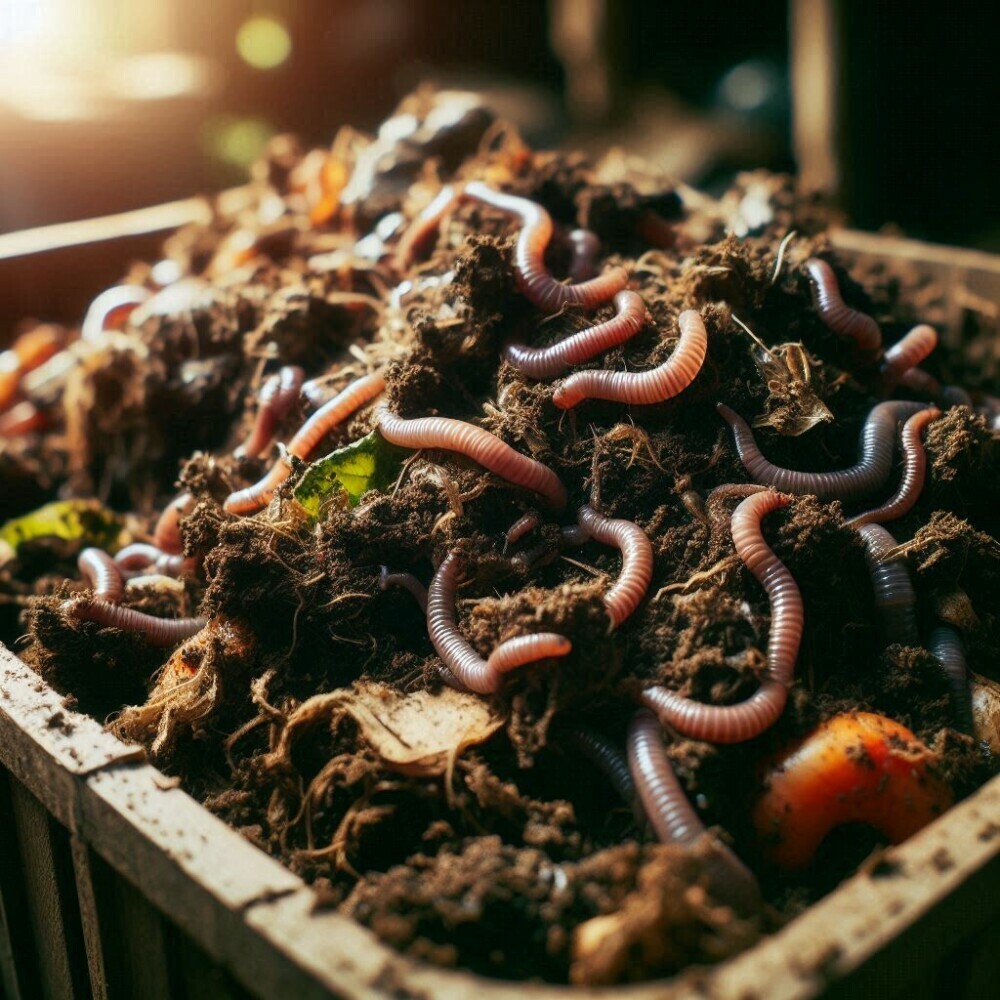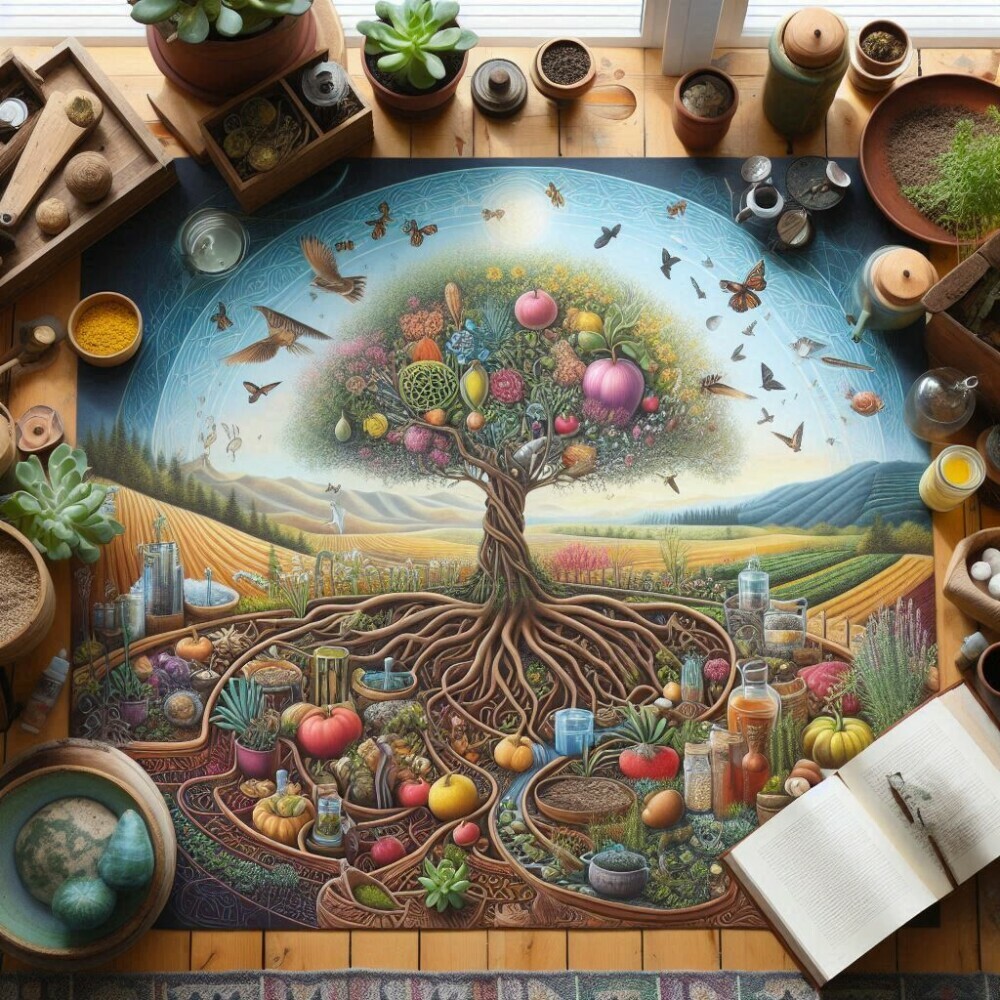I will introduce you to a concept revolutionizing how we think about gardening and sustainability: permaculture. At its core, permaculture is an approach to land management that adopts arrangements observed in flourishing natural ecosystems. It’s not simply gardening; it’s a philosophy, one that’s grounded in the observation of natural systems and a deep respect for the Earth. This gardening practice was pioneered by two Australians, Bill Mollison and David Holmgren, in the 1970s. It has since spread globally, taking on new dimensions and applications. Fundamentally, permaculture rests on three ethics: Earth Care, People Care, and Fair Share. These principles guide the design and development of sustainable and self-sufficient natural habitats and human environments.
Adopting permaculture means more than introducing new techniques into your gardening routine; it’s a shift towards lasting sustainability and balance. I’m here to help you understand the nuances of this approach, help you explore the twelve design principles that support it, and show you how those principles can be integrated into the rhythm of your daily life.
In my opinion, understanding permaculture’s origins and ethics is the perfect starting point. Once you appreciate this foundation, you’ll see how everything in permaculture is interlinked, from the soil you touch to the birds that visit your garden.
Next, you’ll learn the true bedrock of any permaculture system: observation and interaction. It isn’t just about planting seeds and hoping for the best; it’s about seeing your garden as a living, breathing entity and becoming an active participant in its growth. So, if you’re eager to transform your garden into a self-sufficient oasis that mirrors the efficiency of nature itself, let’s move forward and discuss how to establish the foundation of a remarkable permaculture garden.
Observation and Interaction: The Foundations of Permaculture
I will show you why observation and interaction are the backbones of any permaculture setup. It’s not just about planting seeds and hoping for the best; it’s a thoughtful process that begins with a keen eye and an open mind.
You’ll learn how understanding natural ecosystems can inform the design and maintenance of your garden. By simply watching how plants, animals, and abiotic components like soil and water interact naturally, you can mimic these patterns for success in your garden.
Taking a closer look at case studies, I’d like to share some insights from gardens that thrived through careful observation and interaction. These real-life examples will illuminate the practical application of permaculture principles and inspire you to adopt similar strategies.
Lastly, let’s talk about tools and techniques. From simple practices like ‘sit spots’ and nature walks to more involved methods like species mapping and sector analysis, there are many ways to engage with your environment that bolster your permaculture prowess.
Cultivating Diversity: Permaculture Techniques for Variety
According to permaculture principles, you will learn about the significant impact of fostering diversity in your garden. It’s not just about having an assortment of colors and heights; we’re delving into biodiversity that strengthens your garden’s ecosystem.
The concept of diversity in permaculture extends beyond just plant life. It includes a range of animal species, from pollinators like bees and butterflies to beneficial predators like ladybugs and lacewings. Introducing and supporting this variety ensures a balanced, thriving garden environment.
Creating a polyculture, where multiple plants are grown together, emulates natural ecosystems and enhances the health and productivity of your garden. It’s about selecting plants that offer mutual benefits to each other, often referred to as companion planting.
Guild planting is a strategy I like to leverage. It’s about grouping plants that benefit from each other’s presence, creating a symbiotic relationship. For example, tall trees provide shade to lower-growing shade-tolerant species, while deep-rooted plants can help to bring nutrients to the surface for shallower-rooted companions.
Choose something that resonates with your local environment. Local wildlife, indigenous plants, and natural adaptations all influence your planning. By aligning with the biological tendencies of your local area, you can use diversity to create an automated garden.
A diverse garden isn’t just resilient; it’s a cornerstone of permaculture ethics. By encouraging a wide array of life, you are contributing to the well-being of the Earth and creating a sustainable space that future generations can enjoy.
Sustainable Resources Management: Recycling and Conservational Practices
Permaculture isn’t just a method of planting; it’s a philosophy that intertwines with every aspect of resource management in your garden. I’m talking about adopting a stewardship role over the water, soil, and nutrients—seeing waste as an untapped resource. Let’s explore how permaculture deals with each of these essential elements.
 So, have you ever considered the fate of your everyday kitchen scraps? In a permaculture system, compost isn’t an afterthought; it’s a cornerstone. Composting organic waste returns valuable nutrients to the soil, creating a rich, fertile foundation for your plants. I’ll show you how to start a simple compost system for your space and needs.
So, have you ever considered the fate of your everyday kitchen scraps? In a permaculture system, compost isn’t an afterthought; it’s a cornerstone. Composting organic waste returns valuable nutrients to the soil, creating a rich, fertile foundation for your plants. I’ll show you how to start a simple compost system for your space and needs.
Water is precious, and in gardening, it can be all too easy to use more than we need. But here’s where permaculture shines. I’m going to share techniques for harvesting rainwater straight from the skies. Then there’s greywater—the relatively clean wastewater from your house. You’ll learn about simple systems to redirect it to your garden, where it can do a second round of good work.
And it’s not just about recycling and conserving; it’s also about planning. Energy-efficient garden designs maximize productivity and minimize waste. Think about gardening in harmony with the sun, wind, and even the slope of your land. You can constantly adjust your approach, but starting with a good design means you’re off to a running start.
Sustainable resource management isn’t just good for your garden; it’s a boon for the entire planet. You can adopt these practices and significantly reduce your household’s environmental impact if you want to.
Next, I’ll help you implement these principles in your garden. That will include planning out your space to suit permaculture zones and selecting plants that will thrive in your unique conditions. Sustainable gardening is about adaptation, and I’m here to guide you through that journey.
From Theory to Practice: Implementing Permaculture in Your Garden
So now that you’ve got a solid understanding of permaculture principles, you’re probably eager to bring this knowledge into your garden. Seeing how these concepts can come alive behind your home, in a community space, or even on your balcony is thrilling.
You can always start small. Choose something that resonates with you, such as a rainwater collection barrel or a simple compost bin. Your first attempt doesn’t need to be your last and remember, in permaculture, every step counts and contributes to a larger, more sustainable ecosystem.
Drawing up a plan for your space is a smart move. Consider the permaculture zones and decide how you might organize different plants and elements according to the frequency of human activity. You’ll learn about fascinating plant relationships to help place plant varieties in synergistic groupings.
When selecting plants, choose those native to your area or those adapted to your local climate and soil conditions. This isn’t just about sticking a plant in the ground; it’s about nurturing a living system that will flourish with minimal intervention over time.

Of course, integrating the permaculture ethos into your space might also mean navigating local ordinances or homeowners’ association rules. It’s a good idea to figure out what’s permissible and adjust your designs accordingly. Remember, the spirit of permaculture is flexibility and adaptation.
As your garden evolves, so will your relationship with it. Keep an open mind, observe the changes, and don’t worry too much about experimenting and tweaking things as you go along. You’ll learn a lot by doing, and that hands-on experience is just as valuable as anything you’ll find in a book.
If you’re hungry for more knowledge or support, vast communities and resources await you. From local classes to online forums, permaculture enthusiasts are sharing information and encouragement around the globe.
I hope you’ve found this guide helpful and that it spurs you to try it. Next, you’ll learn gardening. May your garden be a thriving hub of sustainability, diversity, and resilience for years. Dive in, get your hands dirty, and enjoy the abundant rewards of working with nature!

